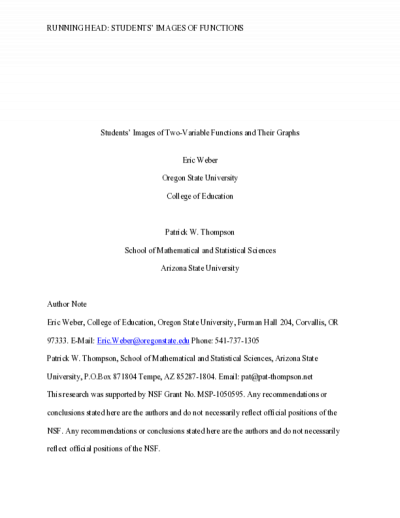Developing Elementary Teachers' Knowledge About Functions and Rate of Change Through Modeling

The purpose of this article is to describe the development of elementary school teachers’ mathematical knowledge for teaching as they participated in a Modeling Instruction environment that placed heavy emphasis on improving their subject-matter knowledge as a basis for affecting the development of their pedagogical content knowledge. We investigate the development of the teachers’ content knowledge and pedagogical content knowledge by considering the results of our iterative revisions with supporting documentation of the insights we made as we refined the course to explore teachers’ knowledge. We conclude that Modeling Instruction helped the teachers conceive of mathematics as a tool to explain scientific phenomena and provided the teachers with opportunities to reflect upon the process of learning mathematics, which were both foundational to the development of their subject matter knowledge and their pedagogical content knowledge.
- Author (aut): Weber, Eric
- Author (aut): Tallman, Michael
- Author (aut): Middleton, James
- Contributor (ctb): Ira A. Fulton Schools of Engineering
